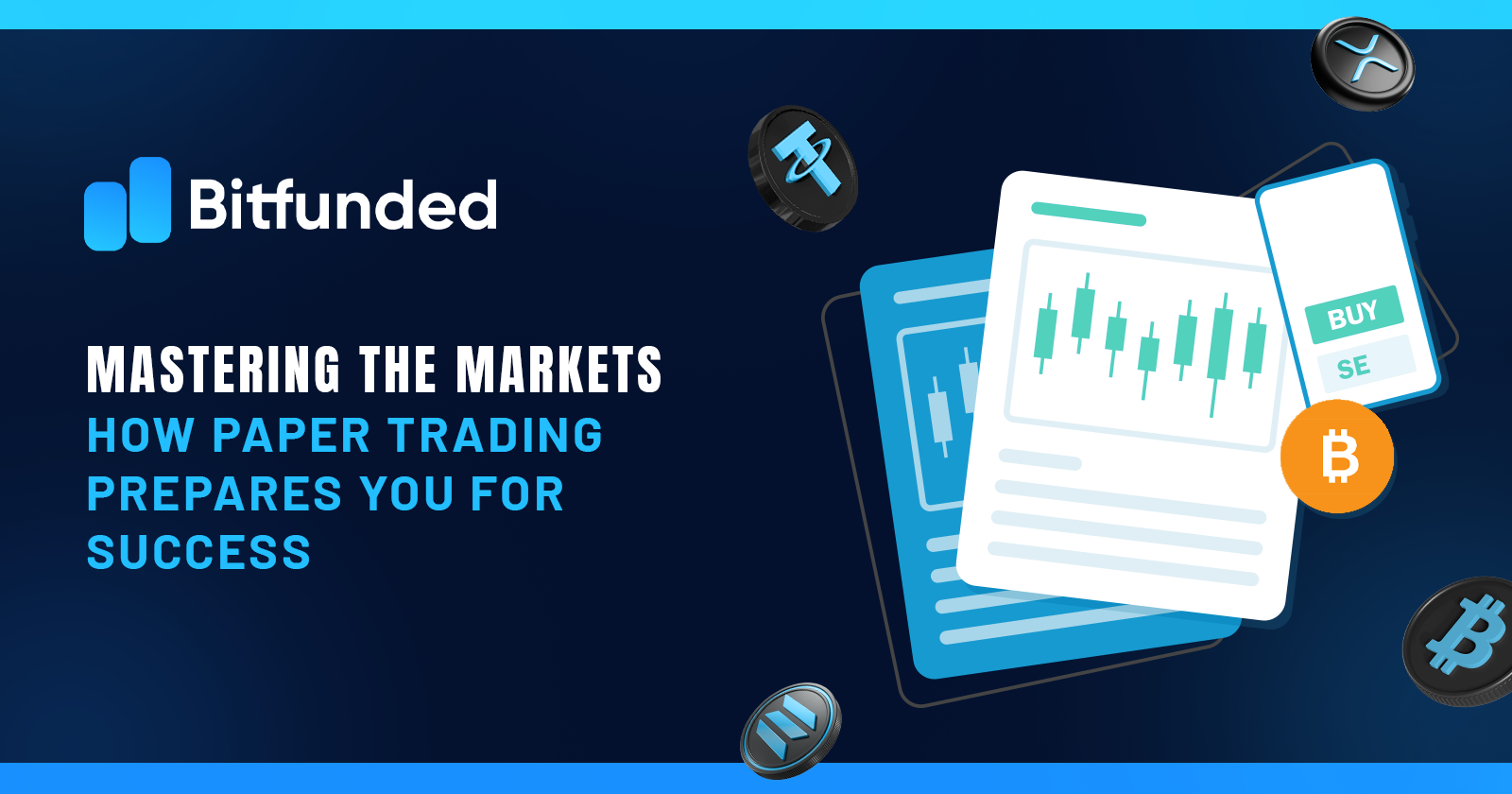When you start trading, you instantly realize it’s a risky game that fills you with excitement and fear. At Bitfunded, we know hesitation can hold back both new and experienced traders from making progress. It is at this point that paper trading becomes very useful, letting you practice without taking risks. Bitfunded leads in prop trading by making this approach part of what we do to help traders from all over the world. Let’s find out how getting started with paper trading can lead you to succeed in real investing.
What Is Paper Trading?
In paper trading, people don’t risk any real money by executing trades that follow the real market in a mock trading environment. Originally, traders used actual paper to log test trades hence the term “paper trading”.
How Paper Trading Works?
Paper trading replicates what you would do in real trading by giving you the chance to buy and sell stocks, forex or cryptocurrencies in a virtual world. Let’s look at what really makes these different. Typically, instead of using your cash, the website will give you a virtual budget from $10,000 to $1,000,000. You can experiment and perfect your trading strategies such as scalping or swing trading, with this setup—since there’s no risk involved.
Paper trading mirrors the real market in events and prices. As a result, you can place orders, adjust loss limits and analyse your activity, while discovering the advanced functions of our platform. It is a great place to practice strategy, since each action teaches you something without the consequences of losing.
Paper Trading vs. Modern Prop Trading: Understanding the Distinction
While both paper trading and modern prop trading (like Bitfunded’s funded account model) allow you to trade without risking personal capital, their objectives diverge. Paper trading is a purely educational tool, designed to simulate market conditions and help you master strategies risk-free. Modern prop trading, however, takes it a step further. With Bitfunded, you can transition from our Free Trial to the Bitfunded Challenge, where successful performance in a simulated environment can earn you a funded account. Profits from these accounts are yours to keep (after a performance fee), blending practice with real-world earning potential.
The Role of Trading Psychology
Success in trading hinges on more than just strategy, it’s about mastering your mindset. Emotions like fear and greed can derail even the best-laid plans, leading to impulsive decisions that erode profits. Paper trading serves as a psychological training ground, helping you observe your reactions to market swings, build discipline, and gain confidence.
At Bitfunded, we emphasize this holistic approach. Our Free Trial lets you practice under simulated pressure, while our Bitfunded Academy provides resources to strengthen your psychological resilience. As a funded trader, you gain access to bi-monthly coaching sessions with experts who guide you through the emotional challenges of trading, ensuring you’re mentally prepared for live markets.
Key Benefits and Considerations of Paper Trading
Paper trading is a versatile tool with significant advantages, but it’s not without limitations. Here’s what you need to know:
- Builds Confidence: For beginners, the stock market or the crypto space can feel overwhelming. Paper trading familiarizes you with platforms, terminology, and order types, reducing the intimidation factor.
- Hones Strategies: Seasoned traders can experiment with new techniques or optimize existing ones, like testing a moving average crossover in a volatile crypto market.
- Educational Value: It’s a gateway to understanding asset classes—stocks, forex, or crypto—and how global events impact prices.
- Reveals Emotional Triggers: While risk-free, it helps you identify how you might react under pressure, though the absence of real money limits its emotional authenticity.
Limitations to Keep in Mind:
- Reduced Emotional Stakes: Without real money, emotional discipline may not fully develop.
- Market Dynamics Gap: Virtual accounts may offer instant execution, unlike live markets where liquidity or delays can affect outcomes.
- Over-Optimization Risk: Success in simulation doesn’t guarantee real-world results due to changing market conditions.
Is Paper Trading Right for You?
Paper trading suits traders at every level. Beginners can use it to build a foundation, while veterans can refine advanced strategies. At Bitfunded, we recommend it as a critical step to assess risk management and adapt to market volatility—key skills for our Challenge and funded account phases. However, it’s not a complete substitute for live trading. Use it to complement real-world experience, ensuring a balanced approach to your growth.
Tips for Effective Paper Trading
- Simulate Real Conditions: Treat your virtual funds with the same care as real money to build discipline that translates to live trading.
- Set Achievable Goals: Mirror the risk-reward ratios you’d use in live trading to stay grounded.
- Maintain a Trading Journal: Log every trade, noting decisions and outcomes, to track progress and learn from mistakes.
- Ease Into Live Markets: Start with micro-positions in the Bitfunded Challenge to transition smoothly, leveraging our coaching support.

